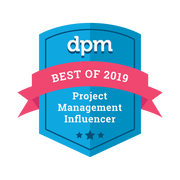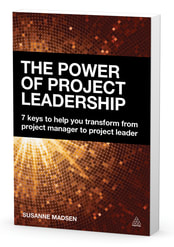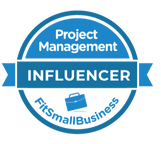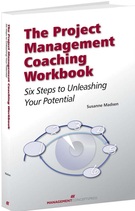We will never have enough time
The first thing we have to realize is that we will never have enough time to get it all done and that we will never get that perfect quiet month, week or day when we will get to the bottom of our pile. Most organizations I work with are running very lean and people have larger workloads than 5, 10 or 15 years ago. We simply work under more pressure than ever before, and if we want to cope well with it and avoid feeling completely stressed, we have to get very disciplined about how we organize ourselves and how the think about our workload.
Essentially my first point is that instead of fighting against the pressure and the workload, we have to accept it and flow with it. Resistance only creates more resistance. Take a quiet moment on your own and breathe into any unpleasantness that you may be feeling. If you’re anxious about everything you need to get done in the next 3 months sit quietly and embrace the anxiety. You may think, “Why would I want to do that? Surely it will just make it worse!” But ironically it won’t make it worse. Actively embracing and feeling an emotion will calm it down because you become familiar with it and accept it. You realize that the feeling is just that, a feeling. If on the other hand you try to avoid it or fight it, the unpleasant feeling will keep lingering. In that state you are likely to become emotional and that’s how the little panic starts.
When you panic we loose access to our rational brain
When you panic, the real problem is that you are not making full use of your rational and logical brain because you’re in the emotional brain. When you have a little panic about your workload (or any other issue for that matter) you move from the front part of your brain – where logic resides – to the middle part of your brain – where the instinctive fight or flight response resides. The middle part of your brain (the amygdala) is helping you decide if you should run away from the situation, or fight it. Neither of those responses may serve you. What you need is to work smarter, and that can only happen if you have full access to the higher thinking center of your brain.
And this brings us back to where we started – with the breathing. One of the most effective ways to stop panicking and to move back into the most resourceful part of your brain, is to simply sit quietly for a moment and to breathe into the unpleasantness. In that moment, don’t think. Just follow your breath as it fills up your lungs and as it empties your lungs. Keep breathing and just allow any feelings that are there. What you will find is that after a while the discomfort will ease because you allow whatever is there. At the end you will feel completely calm and you’ll be able to rationally look at the situation and assess what needs to be done.
Now that you are calm and have full access to all of your brain, we can begin to look at how you can better manage your workload. The goal is that you begin to work smarter, not just harder.
The sand, stones and rocks
There is a great time management experiment that you can try out at home – or watch on YouTube if you don't want to get your hands dirty. It goes like this. Imagine you have two transparent glass vases standing on a desk in front of you. In one of the vases you first put sand, then a bunch of small stones and at the end you put some big rocks. The sand fills up a third of the vase, the small stones another third and the last third goes to a few of your big rocks, but unfortunately not all of them fit it.
You probably already use this principle when you pack the boot of your car to go on holiday. If you start out by putting in the small bags and shoes first there won’t be any space left for the big suitcase. To make sure it all fits, the suitcase has to go in first with all the other small bags fitted around it.
The same is true for how you mange your day. If you start your day by checking emails, having lots of meetings and attend to all the small items, come 3 o’clock and you’ll feel that it’s too late to start any of the big tasks. The result is that you postpone them to the next day or the day after.
Take control of your day
If you want to work smarter, and make sure that you get the results you want in the next 3 months, you have to take control of your day and how you spend it. Focus on the big rocks first and get the most important work done as early as possible in the day. Then it doesn't matter if the afternoon is full of interruptions and meetings. You already got the big rocks out of the way. You wrote that business case, you had the difficult call with the client, you carried out that project review and you got that report for the steering board written. That’s how you get consistent results.
You will probably say that you are not able to control how your day unfolds and that you’re not able to set time aside in the morning to work on the big rocks. But the question is how to do it. How can you begin to set two mornings aside every week where you work uninterruptedly on your most important tasks? Maybe you can work from home, from a meeting room or you can put your headphones on so that you indicate to your colleagues that you are doing “deep work” and that you would like to not be interrupted. This takes a bit of discipline from yourself and from others, but it’s absolutely possible, and necessary if you want to work smarter.
Other tips are to limit the amount of times that you check your email during the day. Studies show that every time you are interrupted – for instance by an email – it may take up to 15 minutes to get back into your flow. That’s a long time. So switch off those email notifications and choose how to manage your email instead of letting your email manage you.
In summary, don't ignore the unpleasant thoughts and feelings you have about your mounting workload, and be careful not to panic about it either. Instead, sit still and breathe into the unpleasantness until you accept it and you feel that it passes. Then look at how you can optimise your day, for instance by doing your difficult tasks and "deep work" early in the day without being interrupted. Why not give it a try?
If you liked this post, you may also like:
Balancing Positive and Negative Stress
My Story - Working Smarter; Not Harder
Ten Timeless Techniques to Combat Negative Stress
Delegate Effectively and Thoughtfully
Seven Essential Time Management Strategies










 RSS Feed
RSS Feed